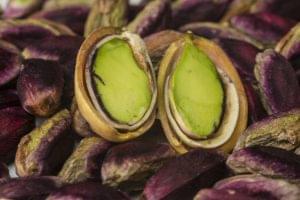Pistachio boom in the world – it will become a favorite snack in many places
The demand for pistachios is constantly growing worldwide, and global trends are transforming not only consumption habits but also agricultural practices. Although the current market is dominated by the United States and Iran, climate change is opening up the possibility of pistachio cultivation in more and more countries, including Hungary. However, the new opportunities also bring new challenges: water shortages, global supply shortages and market restructuring are all affecting the future of cultivation – writes Agrarszektor.
Rising demand, shrinking supply
 Pistachios are no longer just a luxury delicacy: they have become a symbol of health-conscious nutrition, which has given new impetus to global market demand. Despite this, the supply side is facing increasing difficulties. The United States – the world’s largest pistachio grower – has registered a significant decline this year: the export volume of 1.4 billion pounds in 2023 is expected to decrease by 15 percent by 2025. This is not only a problem for American producers, but also for the global market as a whole, as the shrinking supply has resulted in a 30 percent price increase in a single year.
Pistachios are no longer just a luxury delicacy: they have become a symbol of health-conscious nutrition, which has given new impetus to global market demand. Despite this, the supply side is facing increasing difficulties. The United States – the world’s largest pistachio grower – has registered a significant decline this year: the export volume of 1.4 billion pounds in 2023 is expected to decrease by 15 percent by 2025. This is not only a problem for American producers, but also for the global market as a whole, as the shrinking supply has resulted in a 30 percent price increase in a single year.
Water is the new gold in pistachio farming
Pistachio nuts have an extremely high water requirement: up to 4 liters of water can be needed to grow a single nut. According to Szabolcs Pásztor, research director at the Oeconomus Economic Research Foundation, this is the biggest challenge for growers, especially in an era of global water shortages. Although the plant tolerates drought well, it still needs a reliable water supply during its long growing season. This is especially critical in regions such as California or Iran, where water management is already causing serious tensions.
Reorganizing the value chain, new players on the scene
Iran, the second largest pistachio exporter, increased its exports to the United Arab Emirates by 40 percent, indicating that international players are quickly responding to demand gaps. The value chain is becoming increasingly complex, with Iraqi, Turkish and Iranian intermediaries rethinking trade routes, which could lead to a reordering of the global market. At the same time, consumer trends point to sustained growth, so any movement on the production side is of paramount importance.
Related news
Protein Waffle Bar / MaxiNutrition
🎧 Hallgasd a cikket: Lejátszás Szünet Folytatás Leállítás Nyelv: Auto…
Read more >AM: ornamental plant growers can continue to count on government support
🎧 Hallgasd a cikket: Lejátszás Szünet Folytatás Leállítás Nyelv: Auto…
Read more >Ministry of Agriculture supports the food industry’s adaptation to new challenges
🎧 Hallgasd a cikket: Lejátszás Szünet Folytatás Leállítás Nyelv: Auto…
Read more >Related news
Hungarian professional leadership also shaped global economic decisions at the historic B20 summit in South Africa
🎧 Hallgasd a cikket: Lejátszás Szünet Folytatás Leállítás Nyelv: Auto…
Read more >Foodora expands: it brought fast delivery to 21 new cities this year
🎧 Hallgasd a cikket: Lejátszás Szünet Folytatás Leállítás Nyelv: Auto…
Read more >One hundred thousand smiles in ten years – The 10th Christmas SmileElves campaign has ended
🎧 Hallgasd a cikket: Lejátszás Szünet Folytatás Leállítás Nyelv: Auto…
Read more >






